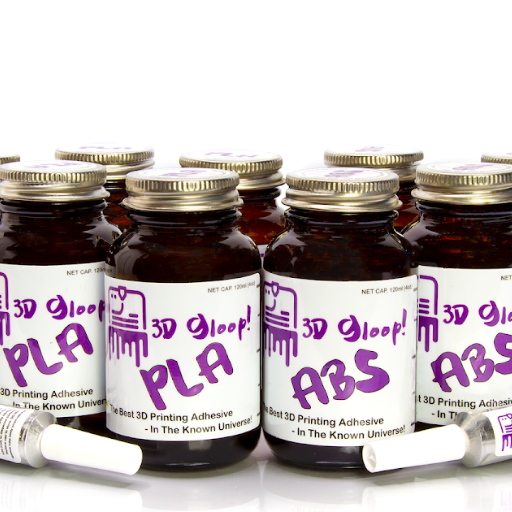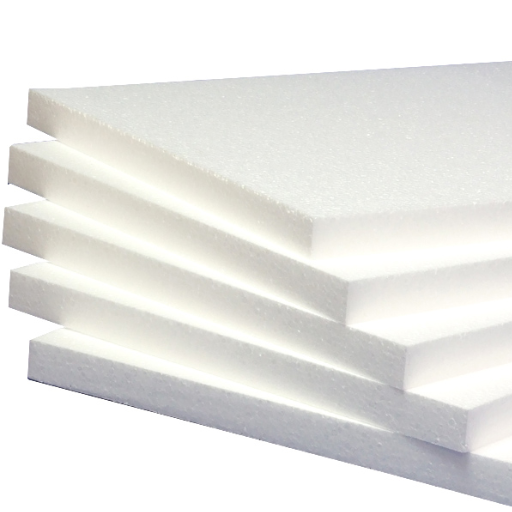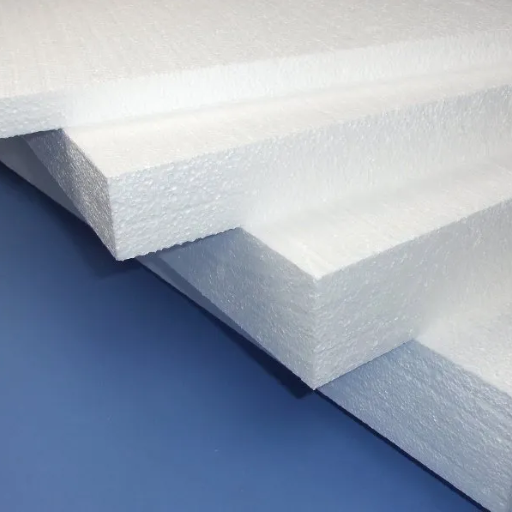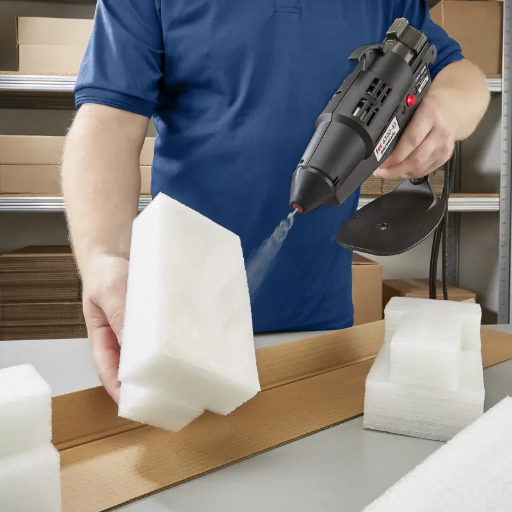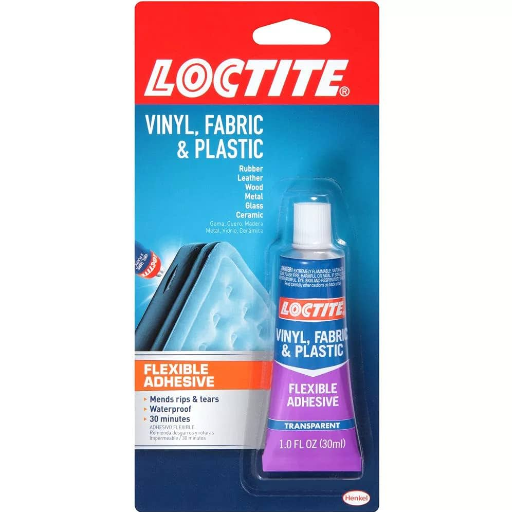When it comes to choosing the right adhesive for your project, knowing the differences between Loctite and superglue is essential. Both adhesives are widely used across various industries and DIY applications due to their strong bonding capabilities, but they are not interchangeable. This comprehensive guide explores the key distinctions, strengths, and potential limitations of each adhesive, empowering you to make an informed decision based on your specific needs.
We’ll begin by examining the chemical compositions and bonding mechanisms of Loctite and superglue. This foundational knowledge will help you understand why these adhesives work differently depending on the materials involved. From there, we will break down their performance across various surfaces, such as metal, plastic, and wood, and look at how environmental factors like temperature and moisture impact their effectiveness.
Additionally, this guide will address the specific scenarios where one adhesive outperforms the other, coupled with practical recommendations for application techniques to maximize bonding success. By the end of this article, you’ll have a clear understanding of how to choose the right adhesive for your tasks, whether you’re engaged in a complex industrial repair or a simple household fix.
What is the Difference Between Loctite and Super Glue?

Though both Loctite and Super Glue are based on cyanoacrylate adhesives, they differ in terms of formulation, application, and end-use. Super Glue is a high-speed adhesive, which means that it is most suited for small, quick bonds on non-porous surfaces such as metal, plastic, and ceramic. It bonds instantly and provides high initial strength; however, some environments, such as those with changing temperatures or moderate moisture, may limit its durability. Loctite, on the other hand, focuses on a wide range of engineering adhesive products with different formulations for specific needs, such as industrial grade, high temperature, or flexible materials. Both adhesives are strong, but Loctite is preferred in extreme conditions for durable, high-performance bonding.
Understanding Loctite Super Glue
Loctite Super Glue is an adhesive specifically designed for a quick, strong bond on metals, plastics, rubbers, wood, and ceramics. This cyanoacrylate glue’s unique formulation allows it to dry almost instantly while still possessing remarkable bond strength which provides an advantage for both professional and home use. Additional features formulated in Loctite SUPER Glue include crack and stress resistance, low shrink rate, and superior strength in moderate humidity and temperature. Some formulations, like gels, can also be dispensed with greater accuracy on vertical and porous surfaces to reduce mess. Unlike standard Super Glue, Loctite Super Glue is enhanced to meet specific task requirements, outperforming ordinary glue in reliability and strength under demanding applications.
The Composition of Super Glue
Super Glue is a cyanoacrylate adhesive; its primary component is cyanoacrylate ester. The active ingredient is responsible for explaining ‘Super Glues’ exceptional bonding capacity. In the presence of moisture, the adhesive polymerizes, making it ideal for binding different surfaces. It also contains other substances, which inhibit immediate polymerization while stored, as that would defeat the purpose of prolonged shelf life. It’s common to find thickening agents in many Super Glue formulations because a more viscous polymer grease can be used across more material types. Along with thickeners, the addition of plasticizers makes the adhesive impact-resistant and more flexible. Rubber particles are added to some advanced formulations to make them more ‘super’ and tougher than the original. These modifications improve resistance to impact or thermal expansion, and as a result, make the wide range of applications Super Glue can be utilized broader.
Key Differences in Adhesive Properties
Cyanoacrylate adhesives, widely known as Super Glue, greatly differ from other adhesives in their bonding speed and strength as well as the types of materials they can bond. Unlike epoxy adhesives which require mixing and curing, cyanoacrylates bond nearly instantaneously when moisture is present, making them perfect for quick repairs. Super Glue also creates very strong bonds on non-porous surfaces like metal, plastic, and ceramic, while traditional adhesives such as PVA glues work best for porous substances like wood and paper. However, cyanoacrylates do not fill gaps as well as epoxies, which can build structural bonds over uneven surfaces. There’s also the level of temperature resistance that differentiates the two; Super Glue can withstand moderate temperatures, while high effects of heat require specialized high-temperature adhesives. It is important to know these differences to choose the right adhesive for particular needs.
How to Choose the Right Adhesive for Your Needs

When selecting the right adhesive, consider the following key factors to ensure optimal performance:
- Material Compatibility: Determine the materials you need to bond. For non-porous surfaces like metal or plastic, cyanoacrylates are highly effective. For porous materials such as wood, PVA glue is often more suitable.
- Bond Strength and Durability: Evaluate the required bond strength and expected durability of the application. Cyanoacrylates provide quick, high-strength bonds, while epoxies offer longer-lasting solutions for structural or heavy-duty needs.
- Curing Time: If speed is critical, choose adhesives like Super Glue, which bond instantly. For projects requiring careful assembly, slower-curing adhesives like epoxies may be preferable.
- Surface Conditions: If surfaces are uneven or gaps need to be filled, use an adhesive with gap-filling capability, such as epoxy. Cyanoacrylates are less effective for this purpose.
- Temperature Requirements: Consider the environment where the adhesive will be performed. For high-temperature environments, specialized heat-resistant adhesives are necessary.
By analyzing these factors about your project requirements, you can make an informed decision and ensure successful adhesion.
When to Use Super Glue
Super Glue, or cyanoacrylate adhesive, is ideal for applications requiring a fast, strong bond on small surfaces. It works best on non-porous materials such as ceramics, plastics, metals, and glass. Its rapid curing time makes it particularly useful for quick repairs or projects where time is a critical factor. However, Super Glue is not well-suited for surfaces exposed to prolonged moisture, high heat, or significant flexing since it becomes brittle under stress. For optimal results, ensure surfaces are clean, dry, and tightly fitted before application.
When Loctite Super Glue is the Better Option
Loctite Super Glue is a great consideration for those who seek durability, precision, chemistry, and synergy between the two. Aside from bonding exceptionally well and lasting for years, it is designed to work with a wide range of materials such as plastics, rubber, metal, wood, and even leather. Its extreme durability makes it ideal for challenging environments. Besides these features, extreme temperature, water exposure, and impact resistance make it even more suitable for advanced environments. Moreover, Loctite offers gel formulas that eliminate runs and allow for applications using other than horizontal surfaces, thus enabling more precision and control. For delicate fixes and professional-grade projects alike, Loctite Super Glue gives the security of reliable results every time.
Considering Plastic, Gel, and Other Materials
Choosing an adhesive suited for specific applications requires a thorough understanding of material compatibility. Loctite Super Glue delivers well-rounded solutions for a wide range of materials, particularly plastics like acrylic or polycarbonate, which is where Loctite excels but many other adhesives do not. Many untraditional adhesives fail to deliver a strong, lasting bond and fail for these materials. For PE or PP—a type of plastic with low surface energy—adhering to it may require the use of a special primer to achieve optimal adhesion.
The gel formula further increases versatility for vertical or overhead repairs where precision matters greatly. Its thicker form prevents the glue from dripping, meaning it is ideal for more complex surfaces or porous materials such as wood or leather. Additionally, certain formulations are robust enough for extreme conditions, withstanding impact and heat. Its thicker texture also helps when rapid bonding is required and little cleanup is desired, such as for detailed repairs or intricate assemblies, proving effective across a variety of materials, capable of delivering a satisfactory bond, and professional-grade outcomes.
Exploring the Potential of Henkel Loctite Super

Specialized & effective, Henkel Loctite Super tackles the difficulties of bonding a wide array of materials – including low-energy surface plastics, metals, ceramics, and even rubber. This is made possible by the technology’s use of advanced adhesive technologies that include high-performance requirement formulations. For example, the integration of gel-based formulas allows improved control over the application, particularly for intricate repairs that restrict aesthetics or accuracy. Moreover, special primers can be used for greater adhesion on certain PE or PP surfaces to ensure strong and lasting bonds. These properties tailed for severity such as high temperature and physical impact resistance means that Henkel Loctite can tackle anything. Henkel Loctite Super is truly a versatile and reliable solution standing as a backbone for professional tools.
Benefits of Using Loctite for Industrial Applications
Loctite adhesives have a variety of benefits perfectly tailored for industrial use. First, their bonding strength guarantees versatility with different materials like metals, composites, and plastics that are usually predominant in construction and manufacturing. Such flexibility allows for less reliance on mechanical fasteners which improves the appearance and strength of assembled structures.
Second, Loctite products can withstand high temperatures, chemicals, and even high vibrations which makes them suitable for high-end and heavy-duty applications. Their designs are meant to provide strength under extreme conditions; elongating the time between maintenance and ensuring long-term durability.
Third, these adhesives help streamline the assembly process through fast curing times and accurate application. This leads to improved production line efficiency and reduced downtime. Furthermore, the broad range of products available like anaerobic thread lockers and other structural adhesives address more specific industrial challenges which makes them highly economical for sophisticated tasks.
Loctite remains a crucial component on every continent for virtually every industry from aerospace installation to the automobile industry because of its proven reputation for efficiency and reliability.
Why Loctite is a Versatile and Reliable Adhesive
Loctite’s determination to resolve the world’s most difficult industrial challenges is supplemented by its accurately engineered formulations. As a result, Loctite’s adhesives bond a wide array of metals, plastics, and composites with exceptional strength and durability. Also, these adhesives withstand difficult conditions of extreme temperature, high chemical exposure, and steam pressure. This level of performance guarantees application reliability, from truck assembly to construction.
Even more topical, threadlockers, sealers, and structural adhesives fit the specific needs of a range of industries. The improvement in application simplicity and rapid curing means segmented production with less downtime in assembly. For decades, firms around the globe trust Loctite’s supplemental technology as a basic and effective tool for operational performance improvement, as well as increased expense efficiency and reliability.
Can Super Glues Bond Almost Any Surface?

Super glues, or cyanoacrylate as it is known in chemistry, is one of the most versatile adhesives and can bond almost any surface with phenomenal strength. They work well on metals, plastics, ceramics, wood, and even rubber. However, their bonding effectiveness tends to be poor on surfaces like polyethylene, polypropylene, or Teflon, which have low surface energies. Sometimes, surface preparation or special primers are needed to enable better bonding on these materials. In summary, super glues are highly adaptable and handy across a plethora of applications because of their fast curing.
Limitations of Super Glue on Non-Porous Materials
Even though superglue can bond most surfaces very well, it has limitations with non-porous materials. Surface non-porosity includes glass, smooth metal, and plastics like polyethylene and polypropylene; these materials have incredibly low surface energy and do not have sufficient microscopic texture for glue to properly anchor. As a result, adhesion superglue on these non-porous materials is significantly less persistent than that on porous materials. To increase the bond on such surfaces, the super glue would have to first go through sanding to increase roughness or specialized primers for low-energy plastics. Furthermore, the glue bond will slowly deteriorate over time due to the superglue’s exposure to moisture, temperature variations, and heated vibrations, which make it non-ideal for high-stress applications involving superglue.
How to Properly Use Super Glue and Loctite

When using super glue and Loctite, surface preparation is critical. The first steps include cleaning the surfaces with a solvent such as isopropyl alcohol to eliminate oils, soil, or grease. If the goal is to bond some non-porous surfaces, one should apply fine-grit sandpaper for light-sanding and roughening up the surface, or apply low-energy surface primer. One surface should have an even and small amount of glue applied to it before bonding; otherwise, applying too much glue can increase gaps or prolong curing time which can eventually result in a weaker bond. When joining the two surfaces, they should be pressed firmly against each other and held until the glue sets. Depending on the formulation, some variations of Loctite may require longer curing time than super glue. After the glue has been set, it’s critical to let the bond cure for the recommended duration before introducing stress to it. To achieve the best results, always heed the instructions and safety measures provided in the manual.
Application Techniques for Loctite Super Glue
Like other cyanoacrylate adhesives, Loctite Super Glue has specific application procedures that are critical to achieving maximum bonding strength. Make sure the two surfaces that need to be joined are clean, dry, and free from contaminants like dust, oil, or grease. If required, clean with Isopropyl Alcohol. For non-porous materials, surface roughness can be achieved by light sanding with fine-grit paper to improve bonding. Use glue sparingly on one surface – excess application of glue will produce weaker joints and inordinate curing times.
Once the glue is applied, the surfaces should be aligned accurately, brought in full contact, and pressed together firmly to ensure full interfacial contact. Depending on the materials being adhered together, the contact time can be between 10 and 30 seconds. In general, before attempting to move the joined object, allow the adhesive to set for a short while. Curing is believed to be complete in twenty-four hours, though this time frame varies due to the amounts of humidity present in the surrounding areas and the type of Loctite product used.
Since those chemicals may be dangerous to health if proper procedures are not followed, it is prudent for one to adhere to safety procedures stipulated by the manufacturers. Some grades of Loctite Super Glue may also be used on ceramic, plastic, rubber, and even metal but are not recommended for use with poly propylene, polyethylene, or certain polymers with high flexural modulus, unless a specific primer is somehow used.
Tips for Using Super Glue Gel
- Prepare the Surface: Ensure that the surfaces to be bonded are clean, dry, and free of any dust, oil, or debris. Using a mild abrasive or rubbing alcohol can help improve adhesive contact.
- Application: Apply a small, even amount of superglue gel to one surface only. Avoid overapplication, as excessive glue can weaken the bond or prolong drying time.
- Positioning: Quickly align and press the surfaces together with precision. Hold them firmly in place for at least 10-30 seconds to allow initial bonding to occur.
- Curing Time: For optimal bond strength, allow the adhesive to cure fully. While it sets almost immediately, achieving maximum bond strength may take 12-24 hours.
- Temperature and Material Compatibility: Super glue gel performs best at room temperature and works well on various materials, such as plastic, metal, ceramic, wood, and rubber. However, avoid use on polyethylene, polypropylene, or non-stick surfaces, as these materials resist adhesion.
- Storage: Always reseal the tube tightly after use and store it in a cool, dry place to prevent the gel from drying out or hardening prematurely.
- Safety Precautions: Wear protective gloves to avoid skin contact, and work in a well-ventilated area. If glue inadvertently comes in contact with skin, do not pull apart bonded skin; instead, use warm, soapy water or acetone to gently separate and remove the glue.
Ensuring a Strong Cure and Fixture
Achieving an effective cure and tough attachment relies on controlling such factors as material preparation, surrounding environment, and the duration of curing. Before putting adhesives and coatings on surfaces, they should be cleaned properly so that dust, grease, and moisture do not interfere. Also, factors such as temperature and humidity are very important for the curing process. Adhering to the conditions set by the material manufacturer guarantees consistency. Also, taking the type of material into account, for instance, epoxy, concrete, or UV-coated, one should always ensure that he or she does not handle the material too early since it needs sufficient setting time. Using good workmanship and tools for monitoring the curing, such as thermometers or hygrometers, will increase the durability and fixation of the object. By adhering to these instructions, the final product will have favorable mechanical and chemical properties.
References
Frequently Asked Questions (FAQ)
Q: What is the main difference between Loctite and Super Glue?
A: The primary difference lies in their formulations and specific applications. Loctite offers a range of adhesives, including cyanoacrylate adhesives, designed for strong bonding with metals, plastics, and rubber. Super Glue, a cyanoacrylate super glue, is a versatile adhesive typically used for quick repairs on household items.
Q: How does a super glue product work?
A: Super glue, or cyanoacrylate super glue, works by reacting with moisture in the air or on the bonding surfaces. This reaction causes the glue to harden quickly, forming a strong bond that is ideal for many materials.
Q: Is Loctite Super Glue better suited for certain materials?
A: Yes, Loctite Super Glue is better suited for materials like metal, plastic, and rubber due to its strong bonding capabilities and versatility. It is specifically designed to handle more demanding applications compared to regular super glues available in the market.
Q: Can super glue or Gorilla Glue be used interchangeably?
A: While both are strong adhesives, they have different compositions and are better suited for different tasks. Super glue is a great choice for quick repairs and small items, while Gorilla Glue is known for its expanding properties and is often used for larger surfaces.
Q: Why is an introduction to cyanoacrylate important for understanding these adhesives?
A: Understanding cyanoacrylate is crucial because it is the key ingredient in superglue products. It explains how these adhesives achieve quick bonding, and durability, and why they are a versatile adhesive option for various applications.
Q: What are some common applications for Loctite and Super Glue?
A: Loctite is often used in industrial and mechanical settings for securing bolts and screws, while Super Glue is a versatile adhesive ideal for quick household repairs, such as fixing broken ceramic, plastic, or acrylic items.
Q: How does Loctite Red differ from other Loctite products?
A: Loctite Red is specifically formulated for heavy-duty applications, offering high peel strength and adhesion. It is used in situations where a permanent bond is required, making it suitable for securing bolts and screws in machinery.
Q: What should I consider when choosing between Loctite and Super Glue?
A: Consider the materials you are working with, the required bond strength, and the specific application. Loctite offers specialized products for industrial use, while super glue is a versatile option for everyday household repairs.
Q: Why is unleashing the potential of Henkel important in the adhesive industry?
A: Unleashing the potential of Henkel is important as they are a leading manufacturer in the adhesive industry, providing innovative solutions like Loctite that cater to various industrial and consumer needs, ensuring reliability and quality in adhesive products.
Q: How do cyanoacrylate adhesives compare with other types of adhesives?
A: Cyanoacrylate adhesives, such as superglue, offer quick bonding and are ideal for small to medium-sized tasks. They differ from other adhesives, like epoxy or polyurethane, which may offer different properties such as flexibility or gap-filling capabilities.
















